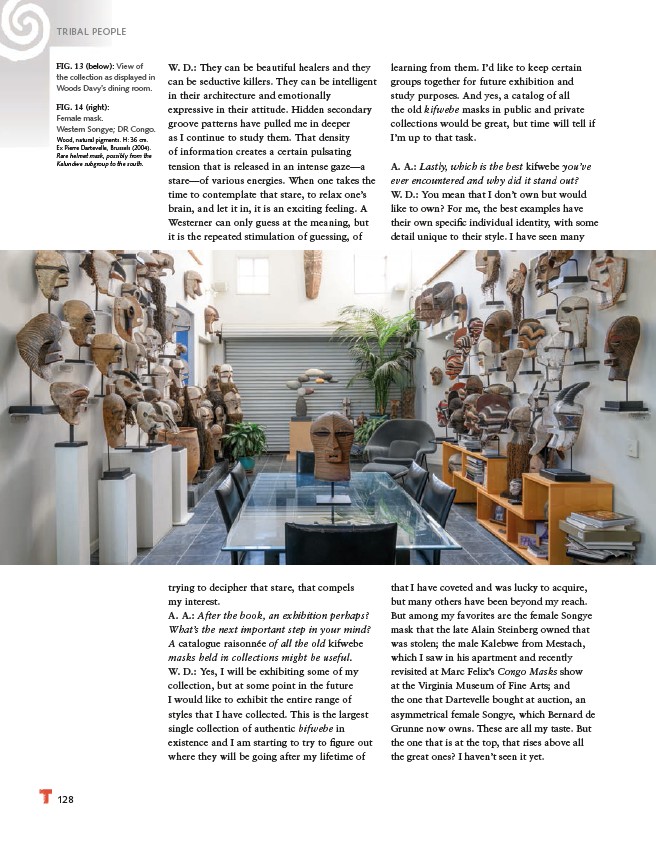
TRIBAL PEOPLE
128
trying to decipher that stare, that compels
my interest.
A. A.: After the book, an exhibition perhaps?
What’s the next important step in your mind?
A catalogue raisonnée of all the old kifwebe
masks held in collections might be useful.
W. D.: Yes, I will be exhibiting some of my
collection, but at some point in the future
I would like to exhibit the entire range of
styles that I have collected. This is the largest
single collection of authentic bifwebe in
existence and I am starting to try to fi gure out
where they will be going after my lifetime of
learning from them. I’d like to keep certain
groups together for future exhibition and
study purposes. And yes, a catalog of all
the old kifwebe masks in public and private
collections would be great, but time will tell if
I’m up to that task.
A. A.: Lastly, which is the best kifwebe you’ve
ever encountered and why did it stand out?
W. D.: You mean that I don’t own but would
like to own? For me, the best examples have
their own specifi c individual identity, with some
detail unique to their style. I have seen many
that I have coveted and was lucky to acquire,
but many others have been beyond my reach.
But among my favorites are the female Songye
mask that the late Alain Steinberg owned that
was stolen; the male Kalebwe from Mestach,
which I saw in his apartment and recently
revisited at Marc Felix’s Congo Masks show
at the Virginia Museum of Fine Arts; and
the one that Dartevelle bought at auction, an
asymmetrical female Songye, which Bernard de
Grunne now owns. These are all my taste. But
the one that is at the top, that rises above all
the great ones? I haven’t seen it yet.
FIG. 13 (below): View of
the collection as displayed in
Woods Davy’s dining room.
FIG. 14 (right):
Female mask.
Western Songye; DR Congo.
Wood, natural pigments. H: 36 cm.
Ex Pierre Dartevelle, Brussels (2004).
Rare helmet mask, possibly from the
Kalundwe subgroup to the south.
W. D.: They can be beautiful healers and they
can be seductive killers. They can be intelligent
in their architecture and emotionally
expressive in their attitude. Hidden secondary
groove patterns have pulled me in deeper
as I continue to study them. That density
of information creates a certain pulsating
tension that is released in an intense gaze—a
stare—of various energies. When one takes the
time to contemplate that stare, to relax one’s
brain, and let it in, it is an exciting feeling. A
Westerner can only guess at the meaning, but
it is the repeated stimulation of guessing, of